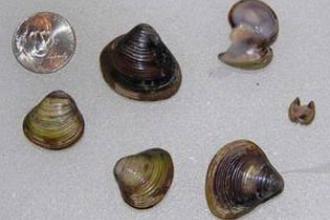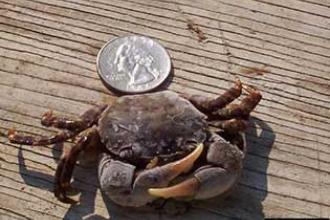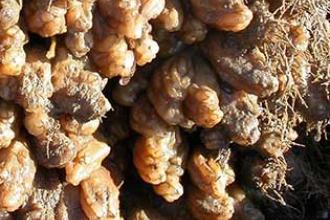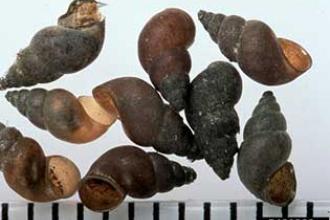Aquatic Invertebrates
Aquatic invasive invertebrates are non-native animals that lack a vertebral column (backbone) and spend the majority of their lives in freshwater, marine, or estuarine environments (including inland waters, riparian areas, and wetlands). Crustaceans and mollusks are the most common invasive aquatic invertebrates found in the United States.
Citations:
- Hine, R. and E. Martin. 2015. “Invertebrate.” In: A Dictionary of Biology (7th ed). Oxford University Press.
- Nonindigenous Aquatic Species Database. Species List. USGS, Gainesville, FL. [Accessed Aug 4, 2017].
- U.S. House Committee on Science. Aquatic Invasive Species Research Act Report [PDF, 468 KB]. H. Rep. No. 108-324.

Quagga Mussel
Dreissena rostriformis bugensis (Andrusov, 1897); formerly known as Dreissena bugensis (CABI)
Species Information Disclaimer
NISIC provides general information about species considered to be invasive and our information does not have any regulatory implications. There are more than 6,500 invasive species established across the United States. The large numbers of invasive species prevent us from maintaining detailed information on all invasive species. In addition, determining the invasiveness of a species depends on a number of local factors, including type of habitat. The species profiles included on NISIC's site are intended to be an educational resource and should not be considered to be an official list of invasive species by the U.S. Department of Agriculture.















